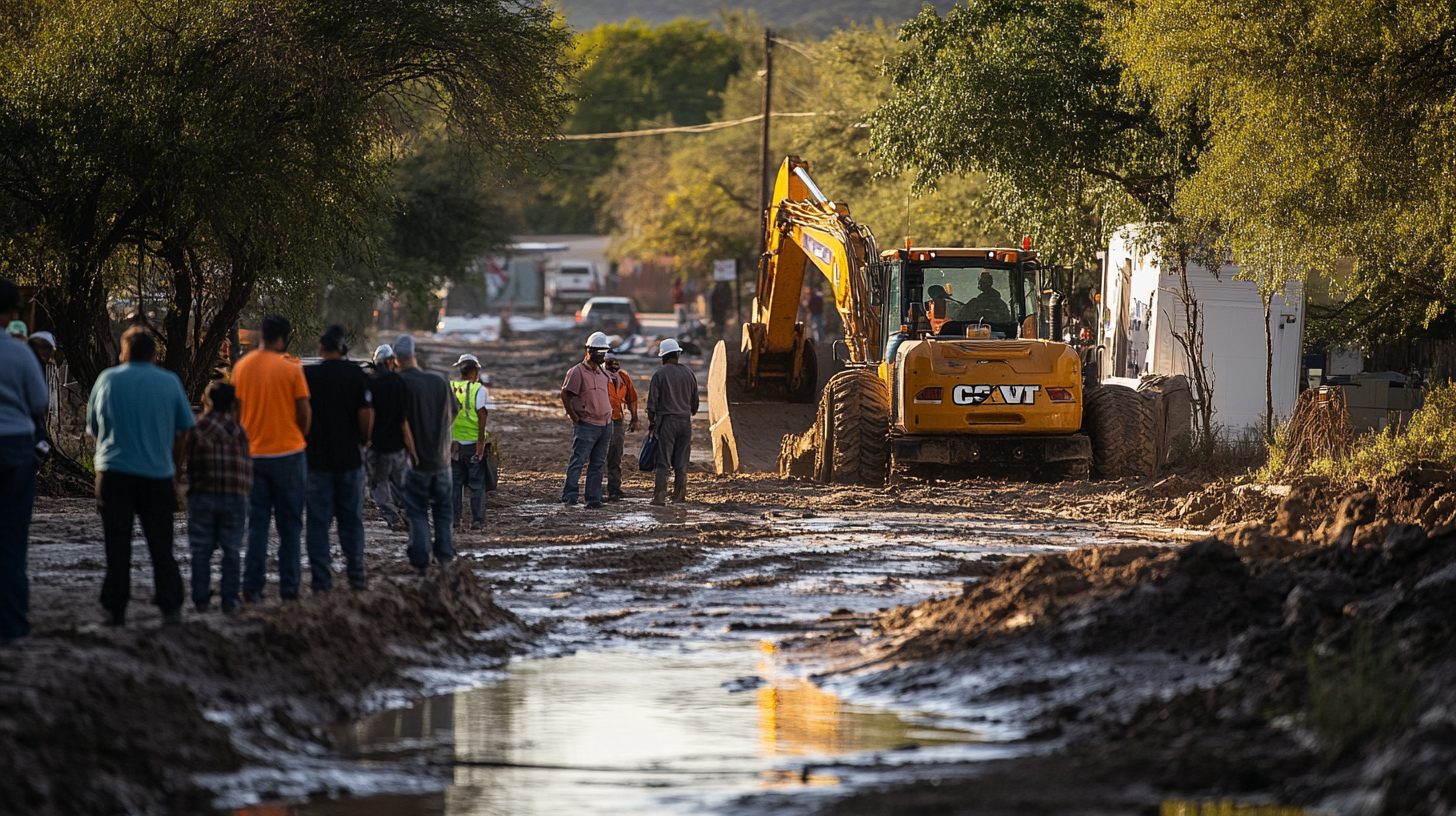**TxDOT Updates Cameron County Road Conditions After Recent Flooding**
Following a period of intense rainfall, the Texas Department of Transportation (TxDOT) has provided crucial updates regarding road conditions in Cameron County, where recent flooding had disrupted transportation significantly. This news comes as Valley residents begin assessing the damages and potential longer-term impacts on their daily lives and local economy.
**Road Conditions and Official Responses**
As of the latest reports, TxDOT confirms that all exit ramps on I-69E, both northbound and southbound, have reopened, easing some of the congestion and travel difficulties experienced in the wake of the floods. However, the FM 2556 exit on westbound IH-2 remains closed due to persistent standing water, highlighting ongoing concerns over drainage issues in certain areas.
Loop 499 and FM 2520 have been successfully cleared and are open for travel, allowing safer commutes for residents and commercial activities. However, portions of State Highway 345 and FM 106 in Rio Hondo are still affected, albeit passable, underlining the resilience needed from community members who continue to navigate these challenging conditions.
Meanwhile, other roads such as Stuart Place Road and FM 508 remain closed, as do sections of FM 506 and SH 107 in Santa Rosa. TxDOT crews are actively working on pothole repairs and debris removal, demonstrating a commitment to restoring safe road conditions as swiftly as possible.
Cameron County Judge Eddie Treviño Jr. stated, “Our priority is ensuring that our roads are safe and accessible for all Valley residents. We are working closely with TxDOT to address these issues head-on.” His words resonate with a community accustomed to rebounding from natural challenges.
**Local Impact on Valley Residents**
For South Texas and the Rio Grande Valley, road accessibility is vital not only for personal mobility but also for the economic health of the region, characterized by a bustling trading and agricultural economy. Prolonged road closures can impede the supply chain, affecting local businesses and impacting daily life for many residents.
Anna Garcia, a small business owner in Harlingen, expressed concerns: “Every day the roads are closed, it affects our deliveries and costs us business. We’re eager to see the situation improved, but grateful for the updates and ongoing work.”
The flooding’s impact has also reignited discussions about infrastructure and drainage systems. Many community members, particularly those in La Feria, have called for better drainage solutions to prevent similar issues in the future. This advocacy continues to play a key role in shaping public policy.
**Connections and Future Implications**
The current situation echoes previous weather-related challenges faced by the RGV, where the interplay of weather patterns and infrastructure resilience remains a constant concern for local officials and residents alike.
Historically, Cameron County has seen similar patterns that necessitate ongoing investments in infrastructure to accommodate both growth and natural adversities. Long-term solutions will likely involve collaborative efforts between county planners, state authorities, and the community to address systemic issues such as insufficient drainage.
Looking forward, Valley residents can expect continued updates and efforts to mitigate travel disruptions. However, the broader implications of these events underscore the need for enhanced preparation and development strategies that can withstand future occurrences.
**Resources and Community Engagement**
For residents seeking more information about road conditions or reporting issues, TxDOT and local authorities have set up dedicated hotlines and online platforms. Engaging with these resources can provide real-time updates and avenues for voicing concerns.
Community events, such as those organized by Harlingen PD addressing stranded car recovery, reflect ongoing efforts to assist those directly impacted by the flooding. Similarly, local initiatives, including high school sports events and community contests, continue to foster a sense of unity and resilience in the face of adversity.
In conclusion, while recent flooding has posed significant challenges for the Rio Grande Valley, the collective response by TxDOT, local officials, and community members exemplifies a commitment to overcoming adversity and enhancing the region’s infrastructure resilience. As Valley residents navigate these changes, continued collaboration and proactive measures will be key to fostering sustainable growth and stability for Cameron County and beyond.







